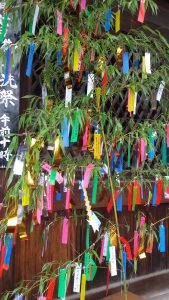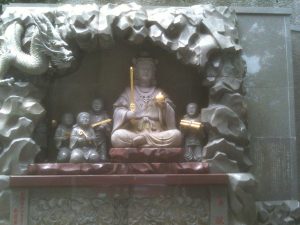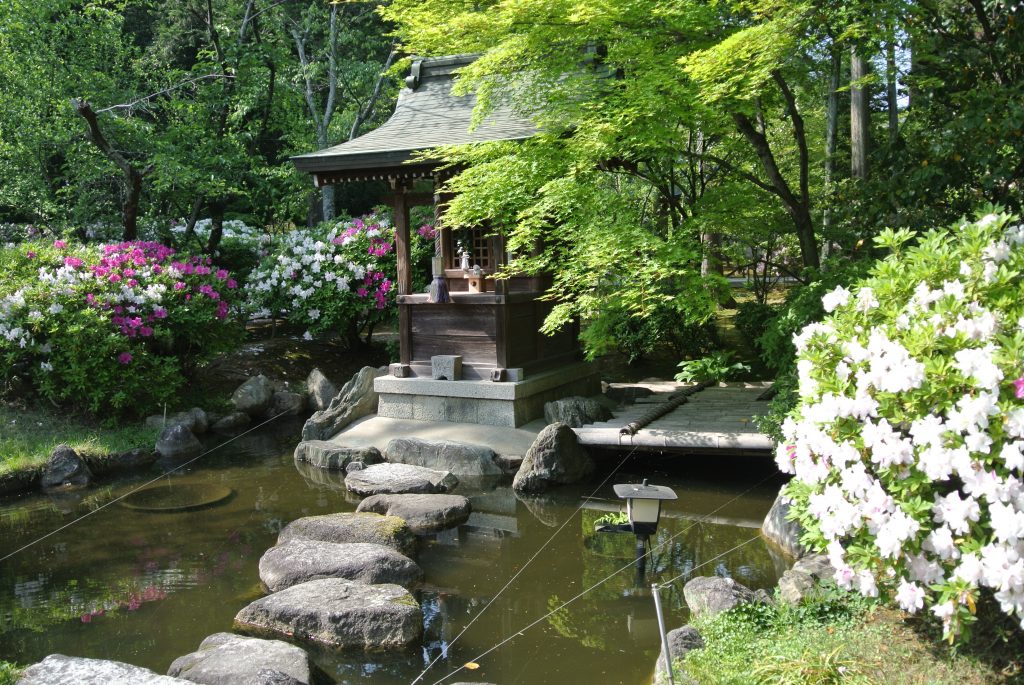
As is well-known, Lafcadio Hearn was preoccupied with ghosts, and his taste for the macabre found its supreme expression in the collection of stories in Kwaidan (1903). His belief in ghosts started out as a childhood obsession, when he would be plagued at night by visions and nightmares. Such was his screaming that his great aunt once locked him in a cupboard as an aversion cure. Though never a religious man, he saw ghosts in later life in terms of the influence of the dead upon the living. Following his idol Herbert Spencer, a leading evolutionist, he thought that cellular memory meant that people inherited values and instincts in a way now attributed to genes. For Hearn this validated ancestor worship and Japanese practices of pacification. Indeed, his whole understanding of Japan was built on the notion of the dead remaining a living presence who guided social values and government policies.
Hearn’s lifelong preoccupation with ghostly spirits is evident too in his Kyoto stories, and The Sympathy of Benten offers a prime example. It’s taken from one of Hearn’s lesser known books entitled Shadowings (1900), which like most of his other books on Japan is a collection of miscellaneous pieces. The title is deliberately suggestive.
Thanks to our WiK intern, Andrew Douglas Sokulski, for the review below (for his previous review of a Hearn story, ‘Common Sense”, please see here).
JD
***************
The Sympathy of Benten
by Andrew Douglas Sokulski
Written by Lafcadio Hearn, “The Sympathy of Benten” takes place at the little known Amadera (rebuilt 1701), where one day a poet named Hanagaki Baishu wanders in and the wondrous begins. The legend sheds light on the presence of mysticism within Kyoto’s literary history, and how written songs and poetry provided a connection between the physical and spiritual worlds.
At the start of the story, while wandering around the shrine’s grounds, a poet comes upon a colored strip of paper (tanzaku) with a poem by the famous Shunrei Kyo written upon it. He happens to be standing near a pond dedicated to the goddess Benten at the time, and the style of the writing affects him so much that he prays for seven nights and days to the deity for the chance to see the female with such graceful and elegant penmanship. At the end of the week, Baishu saw a series of apparitions culminating in the vision of a beautiful young girl who tells him she was sent to be his wife. The marriage was blissful though Baishu could find out nothing of his wife’s background. One day, however, he is asked to meet with a father whose sixteen year old daughter had good writing skills and who wanted to marry her off. When Baishu was presented to her, he found to his shock she was the very same person he had already taken as a wife. The question arises as to how the spirit and the physical embodiment of the daughter differ or can assimilate to each other.
The same – yet not the same.
She to whom he had been introduced was only the soul of the beloved.
She to whom he was not to be wedded, in her father’s house, was the body.Benten had wrought this miracle for the sake of her worshippers.
Hearn claims that the original ending of the legend is unknown, but that a Japanese friend explained to him that, ‘The spirit-bride was really formed out of the tanzaku. So it is possible that the real girl did not know anything about the meeting at the temple. When she wrote those beautiful characters upon the tanzaku, something of her spirit passed into them.’
Lafcadio Hearn’s account of a poet meeting physical and spirit forms of the same person is reminiscent of other tales in which people pray to relatives who have voyaged to another realm of spirits. One aspect of this mysticism is the predictive nature of poetry, especially death poems. These often speak of giving birth to spirits as well as putting curses upon those who read them. Though the aftereffect of the poem here is not one of death, it still is of an otherworldly nature. As the last lines of the story goes,”When she wrote those beautiful characters upon the tanzaku, something of her spirit passed into them.”

Tanabata, the festival of wishes, is held every year in Japan in early July. The origins lie in an ancient Chinese mythological tale about the love of two separated stars, and the festival comprises the writing of wishes upon colored slips of paper which are tied to the branches of bamboo trees and offered to the stars in hope of fulfillment. In the story, the colored strip comes from nowhere, as if given to the main character. “This poem – a poem on first love (hatsu koi) composed by the famous Shunrei Kyo – was not unfamiliar to him; but it had been written upon the tanzaku with a female hand, and so exquisitely that he could scarcely believe his eyes.” (Hearn, 24). In addition, the place is also of importance, for Benten is a goddess of love and couples, and it is not by chance that good fortune in love should befall one with a sincere heart in the temple grounds. Hearn writes, “The tanzaku had come to him while he was standing in front of the temple of Benten-sama; and it was to this divinity in particular that lovers were wont to pray for happy Union.”
As the famed capital of the Heian-era, Kyoto was home to The Tale of Genji as well as The Tale of Heike, among other literary texts. Many aspects of Kyoto life still have their origin in these tales and in their ‘poetic spirit’. One example is the dialect of Kyoto, which sounds softer and more formal than other dialects. It affected the tone of the literary classics. And since poetry is often read imaginatively rather than through the literal word, so has Kyoto long had a reputation of being indirect in conveying true meaning. Interestingly, Hearn does not choose to translate the poem referred to in his tale, but rather lets us imagine the content. However we please to think of it is up to us, and the reader’s perception will inevitably affect the overall meaning of the story.
Hearn’s short story is noticeable for catching much of the character of Kyoto. It is a custom for instance in Buddhist sects such as Zen for those who want to enter training to wait for days at the main gate for an official to decide whether or not to accept them.
“Now on the seventh night…during the hour when the silence is most deep, he heard at the main gateway of the temple-grounds a voice calling for admittance. Another voice from within answered; the gate was opened…” (Hearn, 26.)

There is also the belief that particular shrines are effective in fulfilling certain wishes, one of these being that of finding love. There are many tales of young Japanese visiting shrines time after time in order to pray for their first love, or good grades, or happy family life, or other facets of life. This story seems to fall right into place within the many dedicated shrines and temples of Kyoto.
In the Tale of Heike, as well as in the Tale of Genji, there is often mention of spirits being active in the world. Tragic yet true, suicide occurs more than once within these tales, and the souls of those who pass on in such way are not at rest but wander aimlessly through the material world, uncertain of where to go. Perhaps there is something of that in the separation of spirit and body in Hearn’s strange story.
“One would like to know something about the mental experiences of the real maiden during the married life of her phantom. One would also like to know what became of the phantom— whether it continued to lead an independent existence; whether it waited patiently for the return of its husband; whether it paid a visit to the real bride.” (Hearn, 33).
物の哀れ [mono no aware], a sense of the fleeting, seems to pervade such tales. Tragic, transient, passing on to the future yet remembered eternally – such is the feeling that Hearn’s story evokes.

For more about the botanical significance of Benten ponds, please see Kevin Short’s article here. To learn about Benten’s origins, see this page. For a short report about Mark Schumacher’s remarkable Guide to Benzaiten (68 pages long), please see here.
